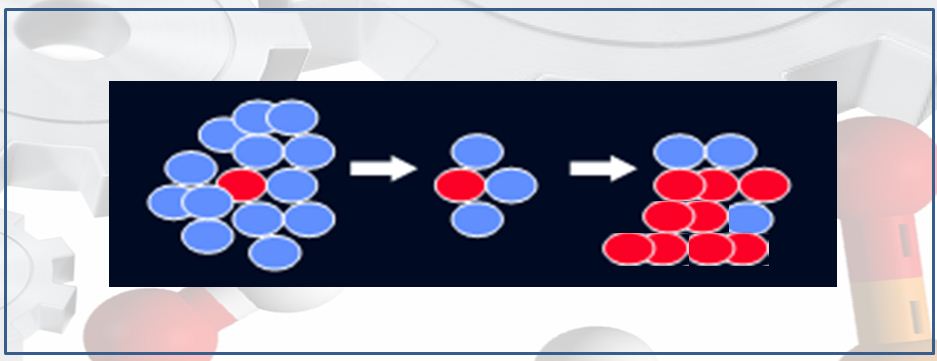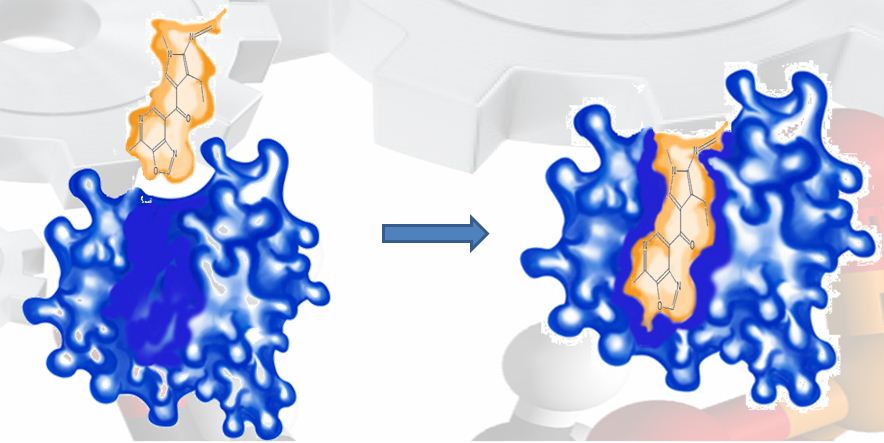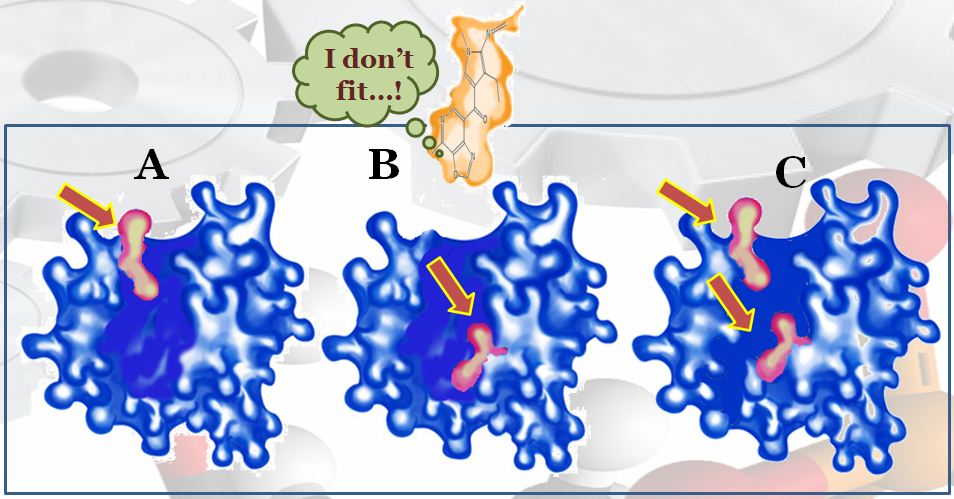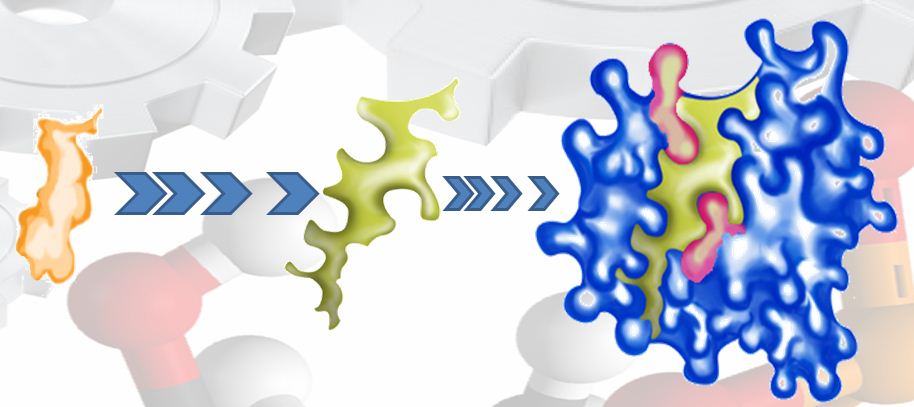Novitero’s approach
Several small molecule drugs that act on specific targets in human tumors have been clinically validated as effective cancer therapies. However, rapid acquisition of resistance to such treatments, resulting in relapse and treatment failure, is becoming one of the key challenges in the management of cancer. Resistance is often caused by the emergent of cells harboring mutations that reduce the sensitivity of the targets to the treatment. Their preferred proliferation, once the cells that were sensitive to therapy have been eliminated, enables their propagation and spreading.

Resistance to therapies is the main cause of cancer treatment relapse. Therapy eliminates sensitive cells (blue), but does not affect resistant cells (red), causing tumor regrowth and relapse.
In order to exert their effects, drugs need to fit well their target protein, enabling high affinity and full blockade of its function.

To exerts its therapeutic activity, a drug needs to fit to its target.
The better the fit, the higher the affinity and activity
Structural changes occurring on a genomic level and subsequently changing the structure and function of the proteins (i.e. Mutations), modify the fit of the drugs to their targets and resulting in drug resistance.
From well characterized mechanisms of resistance in targets such as BCR1-Abl and EGFR, it became evident that in addition to the development of resistance to a single point mutation, multiple mutations, arising from separate clones, as well as compound mutations, arising from a single clone, often occurs. The development of these mutations abrogates the inhibitory action not only of first and second generation drugs, but also of novel third generation drugs, designed to inhibit the single, most frequent mutants in these targets.

Single mutations (Arrow, A or B) or compound mutations (C) reduce the fit of the drug to the target, rendering the drug ineffective.
Novitero redesigns know marketed drugs, for which mutations have been described, and adopt their structure for a better fit to target proteins with multiple mutations.


